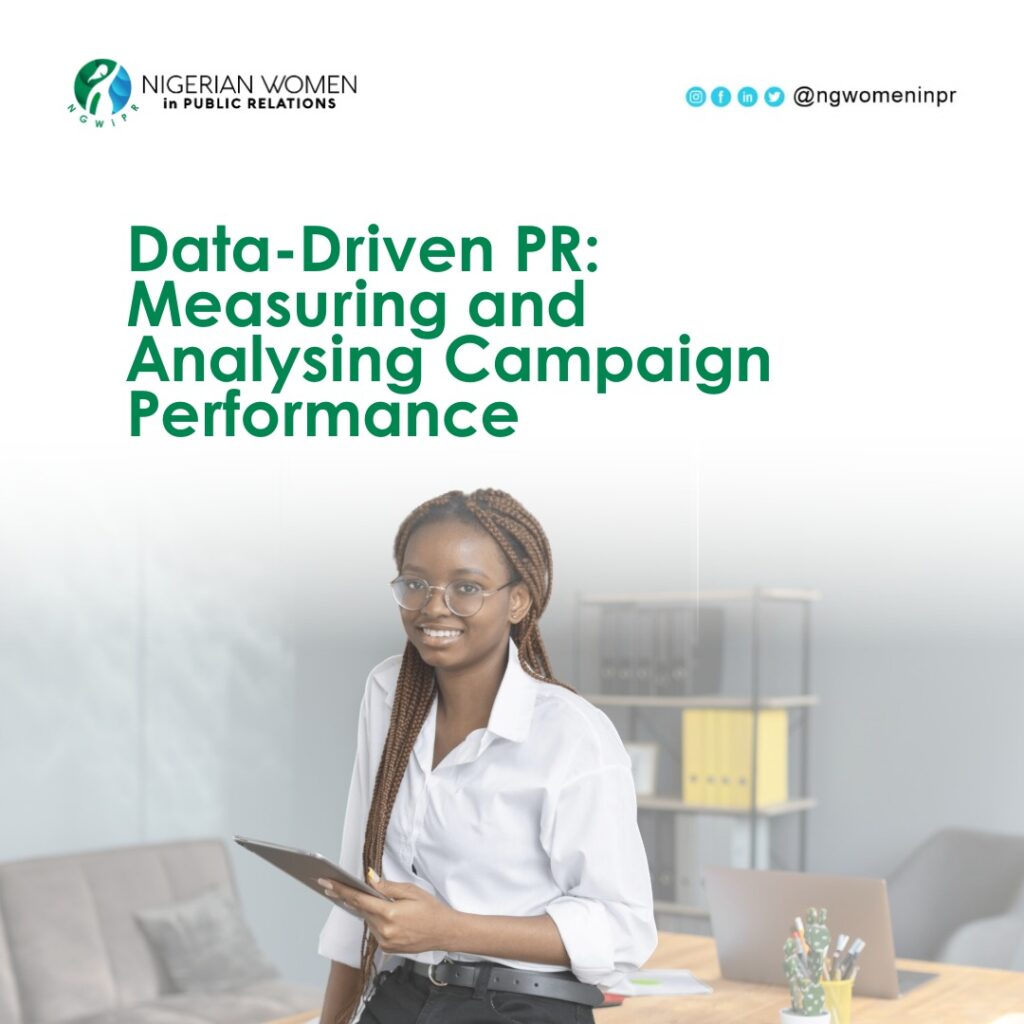In the dynamic realm of public relations, where success hinges on precise communication and engagement, the role of data has taken center stage. For mid-level to PR professional women, understanding and harnessing the power of data-driven PR can be a game-changer. In this blog post, we will explore the realm of data-driven PR, exploring how it\’s transforming the industry and how you can leverage it to measure and analyze campaign performance effectively.
The Rise of Data-Driven PR:
Data-driven PR is more than just a buzzword; it\’s a paradigm shift. Traditionally, PR professionals relied heavily on instinct and qualitative measurements to gauge campaign success. However, the digital age has ushered in an era of quantifiable data that offers deeper insights into PR efforts.
Key Benefits of Data-Driven PR
1. Precise Measurement: Data-driven PR allows you to measure campaign success with unparalleled precision. Metrics like website traffic, social media engagement, conversion rates, and media mentions provide concrete evidence of your impact.
2. Real-time Insights: Unlike traditional PR, where results might take time to manifest, data-driven PR provides real-time insights. You can see how your campaigns are performing almost immediately, enabling agile adjustments.
3. Audience Understanding: Data-driven PR provides rich audience insights. You can analyze demographics, behavior patterns, and preferences, allowing you to tailor messages that resonate with specific target groups.
4. Content Optimization: Through data analysis, you can identify which types of content are most effective. Whether it\’s videos, blog posts, or infographics, data guides you in creating content that captivates your audience.
5. Crisis Management: In the digital age, crises can escalate rapidly. Data-driven PR equips you with the tools to monitor online sentiment, track media coverage, and gauge the impact of crisis communications in real-time.
Measuring Campaign Performance
Effective measurement is the cornerstone of data-driven PR. Here are some key steps to consider when measuring campaign performance:
1. Define Clear Objectives: Before launching a PR campaign, establish clear, measurable objectives. What do you want to achieve? Whether it\’s increased website traffic, higher engagement on social media, or more media coverage, having defined goals is crucial.
2. Choose the Right Metrics: Depending on your objectives, select the appropriate metrics to measure success. For instance, if your goal is to increase website traffic, track metrics like page views, unique visitors, and conversion rates.
3. Use Analytics Tools: Leverage analytics tools like Google Analytics, social media insights, and email marketing analytics to gather data. These tools provide detailed reports on how your campaigns are performing.
4. Monitor Progress Regularly: Don\’t wait until the end of a campaign to assess its performance. Monitor progress regularly to identify any issues or opportunities for improvement.
5. Adjust and Optimize: Based on the data you collect, make adjustments to your PR strategies. If certain tactics are proving more effective, allocate more resources to them. Conversely, if some aspects are underperforming, refine your approach.
Analyzing Campaign Performance
Analyzing campaign performance goes beyond looking at numbers; it involves extracting insights and making informed decisions. Here\’s how you can effectively analyze PR campaign performance:
1. Identify Trends: Look for trends in your data. Are there patterns in engagement or website traffic that coincide with specific PR efforts? Identifying trends can help you understand what\’s working and what\’s not.
2. Compare with Benchmarks: Compare your campaign data with industry benchmarks. This can give you a sense of how you stack up against competitors and industry norms.
3. Seek Insights: Don\’t just look at the numbers; seek insights. Why did a particular campaign perform exceptionally well? What factors contributed to a dip in engagement? Insights help you make data-backed decisions.
4. Adjust Strategies:* If your analysis reveals that certain strategies consistently yield positive results, consider incorporating them into your PR playbook. Conversely, if some tactics are consistently underperforming, it might be time to rethink or abandon them.
Data-Driven PR Tools
To excel in data-driven PR, it\’s essential to have the right tools at your disposal. Here are some commonly used tools:
1. Google Analytics: This powerful tool provides in-depth data on website traffic, user behavior, and conversions.
2. Social Media Insights: Each major social media platform offers insights into your audience\’s behavior, engagement, and demographics.
3. Email Marketing Analytics: Email marketing platforms like MailChimp or Constant Contact provide analytics on open rates, click-through rates, and conversion rates.
4. Media Monitoring Tools: These tools help you track mentions of your brand or campaigns in the media and measure sentiment.
5. PR Measurement Software: Specialized PR measurement tools like Cision or Meltwater provide comprehensive analytics and media monitoring.
Data-driven PR is not a passing trend; it\’s the future of the industry. For mid-level to PR professional women, mastering the art of measuring and analyzing campaign performance is essential for career advancement. It empowers you to make data-backed decisions, demonstrate the value of your PR efforts, and ultimately drive success for your organization or clients. Embrace the power of data-driven PR, and watch your influence and impact in the industry soar.

